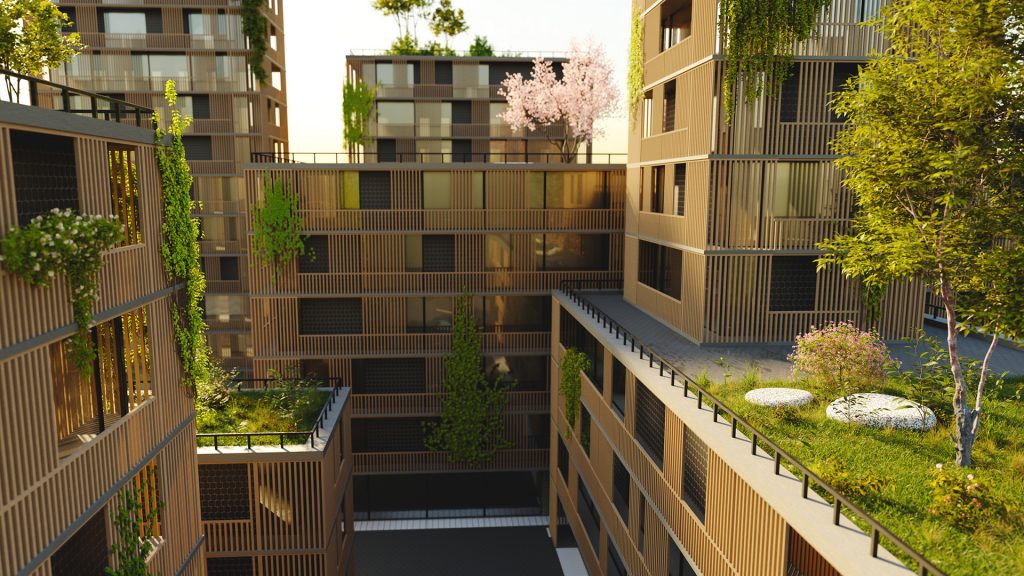The European Council there is negotiated stricter rules develop, develop energy efficiency buildings, which important for achieving the EU’s climate goals.
The European Council reached an agreement on a proposal to revise the Directive on the energy performance of buildings. The revision aims to ensure that all buildings are energy efficient by requiring all new buildings to be zero-emission buildings by 2030 and that by 2050 existing buildings must be converted to zero-emission buildings.
The agreement will enable negotiations with the European Parliament to begin. After reaching a consensus between the Council and the Parliament, the final text will be formally adopted by both institutions.
Józef Sikelá, Czech Minister of Industry and Trade, outlined the importance of energy-efficient buildings, saying: “The building sector is crucial to achieving the EU’s energy and climate goals for 2030 and 2050. But more than that , the agreement reached will help citizens make significant energy savings. Better and more energy efficient buildings will improve citizens’ quality of life while reducing their energy bills and alleviating energy poverty.”
Council agreements on energy efficient buildings
In terms of new buildings, the Council agreed that from 2028 new buildings owned by public bodies will be zero-emission buildings, and from 2030 all new buildings will be zero-emission buildings.
There may be some exceptions for certain buildings, such as historic buildings, places of worship and buildings used for defense purposes.
Member States have agreed to introduce minimum energy performance standards for existing buildings. They would correspond to the maximum amount of primary energy that buildings can use per square meter per year. By introducing these standards, the Council hopes to start repairs and phasing out the worst buildings to improve the national building stock.
For existing non-residential buildings, Member States have agreed to set maximum energy performance thresholds based on primary energy consumption. The first threshold will reduce the primary energy consumption of the worst 15% of non-residential buildings in a Member State, and the second threshold will be set below 25%. It was agreed that non-residential buildings should be brought below the 15% threshold by 2030 and below the 25% threshold by 2034.
The thresholds will be set based on the energy consumption of the national building stock on 1 January 2020 and can be differentiated between different building categories.
Member States agreed that minimum energy performance standards should be set for existing residential buildings based on a national trajectory. They will be in line with the gradual renovation of their building stock to a zero-emission building stock by 2050, as set out in their national building renewal plans.
Energy performance monitoring
Between 2025 and 2050, the national trajectory of energy performance standards will correspond to a reduction in average primary energy consumption across the entire residential building stock. This will ensure that the primary energy consumption of the entire residential building stock is at least equivalent to the level of energy performance class D by 2033, and by 2040 a nationally determined value derived from a gradual reduction in average primary energy consumption from 2033 2050. This will be in line with the conversion of the residential building stock to a zero-emission building stock.
Member States agreed to add a new category ‘A0‘ to the energy performance certificates that would be compatible with zero-emission buildings. Another new category, ‘A+’, could also be added to match energy-efficient, zero-emission buildings that contribute on-site renewable energy to the energy grid.
Currently, the energy performance certification of buildings set by the directive ranks buildings on a scale from A (best) to G (worst) based on their energy performance.
Optimizing new buildings to meet national energy targets
Requirements are being created to ensure that all new buildings are designed to optimize their solar energy generation potential. The deployment of suitable solar energy installations was also agreed upon by the Member States.
Infrastructure for sustainable mobility must also be easily accessible. These include charging points for electric cars and bicycles in or next to buildings, wiring to anticipate future infrastructure and bicycle parking spaces. The agreement also introduces voluntary building renovation passports.
Building renovation plans are also to be issued, with the first plans to be issued by 30 June 2026. These will contain a roadmap with national targets for 2030, 2040 and 2050 in terms of the annual percentage of energy renovation, the primary and final energy consumption of the national building stock and its operational reductions in greenhouse gas emissions.
Background to the agreement
In December 2021, the Commission presented a proposal as part of Suitable for 55 package for the revision of the Energy Performance of Buildings Directive. The proposal is of great importance as buildings are responsible for 40% of energy consumed and 36% of energy-related direct and indirect greenhouse gas emissions in the EU. Therefore, in order to achieve green energy goals, it is necessary to ensure that buildings are energy efficient.
The proposal is also one of the levers needed to achieve the renovation wave strategy published in October 2020. It aims to double the annual rate of energy renovation of buildings by 2030 and encourage deep renovations.
European Council has agreed on rules to create energy-efficient buildings










